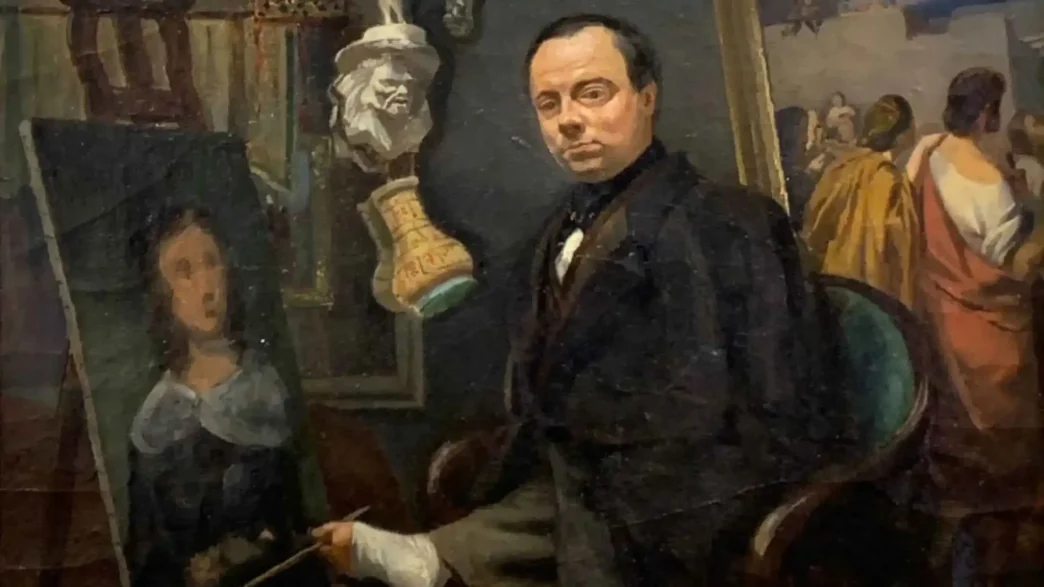Louis Joseph César Ducornet was an excellent French painter, born without arms and a left leg due to phocomelia and painted with his feet.
Born in a simple family in Lille he found his artistic abilities by drawing using coal on the walls. Along with the financial aid and the support of the city, Rosen went to Paris in 1824 to be trained with the masters at that time.
However, with time moving on, is mental condition worsened slightly, yet he made a name for himself with the paintings of various biblical and history stories together with awards in art shows.
Louis Joseph César Ducornet was born on January 10 of 1806 in Lille, he was underprivileged being born to a shoemaker father.
He had phocomelia where he could not have arms or thighs and therefore could not walk.
Despite this, Ducornet creatively found ways to utilize his skills as he could not write because he only had four toes missing from his right foot and he would therefore write on the walls using charcoal.
His early life story made him develop interest in painting and receive support from the locals to have formal art education in Paris.
Louis Joseph César Ducornet started his art career unknowingly when he used his right foot to hold a charcoal stick and found that he could draw.
This discovery sparked his interest in painting, and he was finally able to overcome his physical challenges. His family and community were instrumental in encouraging him, supporting his art education in Paris with top artists.
Thanks to the support from the city of Lille, Louis Joseph César Ducornet was able to attend art school in Paris in 1824.
He also learned from icons like Guillaume Guillon-Lethière and François Gérard. He was also given a pension by the government of King Louis XVIII to acquire his art education.
Even though he could not win the Prix de Rome because of his disability, he won several prizes in the salon exhibitions that testified to the fact that he was an astute painter of the biblical and historical scenes.
Despite his disability, Louis Joseph César Ducornet faced many challenges, especially not being able to participate in the Prix de Rome, a famous scholarship for young artists to study in Rome.
This competition was tough and required a lot of skill, which was hard for Ducornet because of his disability.
Back in the 1800s, people saw disabilities as bad and made it hard for Ducornet to be accepted in the art world.
Louis Joseph César Ducornet, an artist with a disability, won many awards at the Salon exhibitions for his unique style, especially in biblical and historical art.
His famous works, such as “Repentance” and “Mary Magdalene at the Feet of Jesus,” were praised for their size and detail.
Critics, including Maxime Du Camp, believed his art, created with his feet, was as good as that created with hands. His success at the Brussels Salon in 1836 proved he was a respected artist.
Louis Joseph César Ducornet was one of the peculiar painters in the art world who used his right foot to create. This art required great skill and control.
His artworks usually portrayed religious and historical subjects, reflecting his interest in these subjects. His works, for instance, “Repentance” and “Mary Magdalene at the Feet of Jesus,” were recognized for their emotional impact and the use of vivid colors, making him an important artist of the 19th century, though he had a disability.
Louis Joseph César Ducornet was an excellent painter who made “Repentance” in 1828 and another famous piece called “Mary Magdalene at the Feet of Jesus,” which is more than eleven feet tall and bought by the French government in 1840.
“Repentance” shows a biblical scene with bright lights and emotion, which is an example of how well he can tell a story using just his feet.
“Mary Magdalene at the Feet of Jesus” is valued for its bright colors and exquisite workmanship. Another very important piece is “St. Louis Administering Justice,” in the Lille Museum, which exhibits the talent of Ducornet in historical scenes, attention to detail, and his peculiar method of utilizing disability as a mode of artistic expression.
Louis Joseph César Ducornet’s 1852 self-portrait is significant because it narrates his journey as an artist, he was one who painted using the foot.
This picture just isn’t showing his talent but his strength as well.
In a very artistic way, by painting his portrait, Ducornet has demonstrated his overcoming physical weakness to be a strength.
This self-portrait not only helped him gain his position in the art world but also inspired others to conquer their weaknesses and pursue their passions.
The disability could not stop the other critics and artists from admiring the work of Louis Joseph César Ducornet as his work was highly admired by the viewers because of his exceptional talent and unique way.
His ability to paint biblical and historical scenes just by his feet broke barriers that had been placed on the kind of art that could be created by an artist resulting in more artwork being given attention.
Ducornet’s success deserved it as it motivated artists with disabilities today proving that a physical condition cannot hinder one from being an artist.
His work continues inspiring disabled artists to tell their stories and fight for disability representation in the art world.
Therefore, Ducornet’s story reveals that even the creative focus can emerge victorious from every barrier and change the way that people will regard disability in arts in the future.
Louis Joseph César Ducornet was a painter, who faced many personal issues in his life and career but remained faithful to his work. He operated his studio in Paris, at Rue Visconti since 1845.
Even though he had several problems with his body, he never stopped painting and was teaching the experience to the students.
He died at the age of 50 and still remained painting and displaying his works to others till he died the mark was created and the perseverance and creativity would always remain in art.
It is essential to note that the story of an artist named Louis Joseph César Ducornet does not end at the mere physical aspect that coincidentally remains to be a form of impairment; on the contrary, it bursts into strength and inventions. His ability meant that he used his feet as some kind of painter’s brush and because of him, society in its entire conception began seeing disability otherwise and focused more on art.













